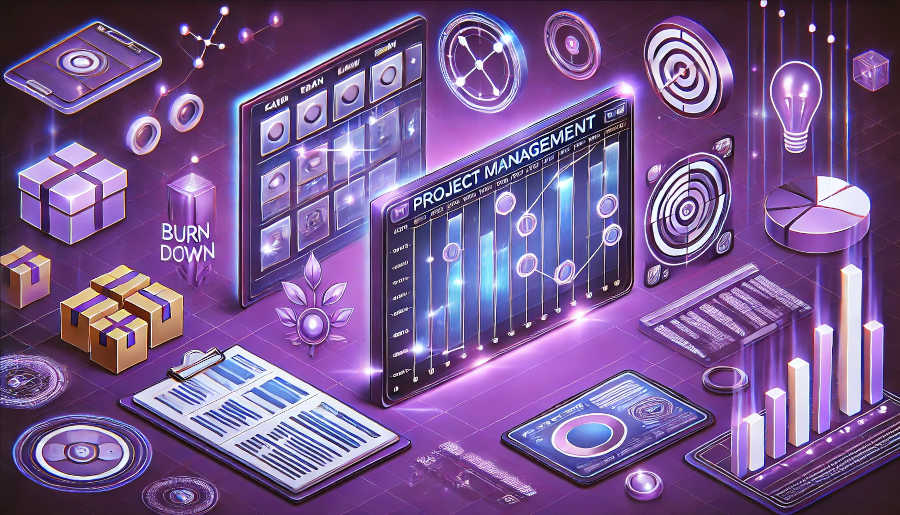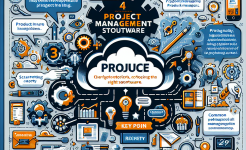Understanding the Product Backlog
The Product Backlog is more than just a to-do list; it is a strategic tool that guides the development process. It contains all the features, enhancements, bug fixes, and technical tasks that the team needs to address. Each item in the backlog, often referred to as a "user story," is prioritized based on its value to the customer and the business. The backlog is never complete; it is continuously refined and reprioritized as the project progresses. This dynamic nature allows the team to respond to changes in the market, customer feedback, and new insights.
One of the key aspects of the Product Backlog is its transparency. All stakeholders should have access to the backlog and understand its contents. This transparency fosters collaboration and ensures that everyone is aligned on the project's goals and priorities. The Product Owner plays a critical role in maintaining the backlog, ensuring that it reflects the needs of the stakeholders and the vision of the product. They work closely with the development team to break down large items into smaller, more manageable tasks, making it easier to estimate and plan.
The Product Backlog also serves as a communication tool between the Product Owner, the development team, and the stakeholders. It provides a shared understanding of what needs to be done and why. Regular backlog grooming sessions, where the team reviews and refines the backlog, are essential for keeping it up-to-date and relevant. These sessions help the team identify dependencies, clarify requirements, and ensure that the backlog is always ready for the next sprint.
Prioritization Techniques
Prioritization is at the heart of effective Product Backlog management. The goal is to ensure that the team is always working on the most valuable items, delivering the highest possible value to the customer. There are several techniques that teams can use to prioritize the backlog, each with its own strengths and weaknesses. One common approach is the MoSCoW method, which categorizes items into Must-haves, Should-haves, Could-haves, and Won't-haves. This method helps the team focus on what is essential and what can be deferred or dropped.
Another popular prioritization technique is the Weighted Shortest Job First (WSJF) method, which is often used in the Scaled Agile Framework (SAFe). WSJF prioritizes items based on their cost of delay and job size. Items with a high cost of delay and a small job size are given higher priority, as they deliver the most value in the shortest amount of time. This method is particularly useful in environments where time-to-market is critical, and the team needs to make quick decisions about what to work on next.
The Kano Model is another useful tool for prioritization. It categorizes features into five categories: Must-be Quality, One-dimensional Quality, Attractive Quality, Indifferent Quality, and Reverse Quality. This model helps the team understand how different features will impact customer satisfaction and guides them in making informed decisions about what to prioritize. By using a combination of these techniques, teams can ensure that their Product Backlog is always aligned with the needs of the business and the expectations of the customers.
Refinement and Grooming
Refinement and grooming are ongoing processes that ensure the Product Backlog remains relevant and actionable. These processes involve breaking down large items into smaller, more manageable tasks, clarifying requirements, and estimating effort. Regular refinement sessions, often referred to as backlog grooming, are essential for keeping the backlog in good shape. During these sessions, the team reviews the backlog, discusses each item, and makes necessary adjustments.
One of the key benefits of refinement is that it helps the team identify and address potential issues early in the process. By breaking down large items into smaller tasks, the team can better understand the work involved and identify any dependencies or risks. This proactive approach reduces the likelihood of surprises during the sprint and ensures that the team is always working on well-defined, achievable tasks. Refinement also helps the team improve their estimates, making it easier to plan and allocate resources effectively.
Another important aspect of refinement is the involvement of the entire team. While the Product Owner is responsible for maintaining the backlog, the development team plays a crucial role in refining it. Their input is essential for understanding the technical aspects of each item and ensuring that the backlog is realistic and achievable. By involving the entire team in the refinement process, the Product Owner can ensure that the backlog reflects the collective knowledge and expertise of the team, leading to better decision-making and more successful outcomes.
Sprint Planning and Execution
Sprint planning is a critical event in the Agile process, where the team selects items from the Product Backlog to work on during the upcoming sprint. The goal of sprint planning is to create a sprint backlog, which is a subset of the Product Backlog that the team commits to completing during the sprint. Effective sprint planning requires a well-maintained and prioritized Product Backlog, as this ensures that the team is always working on the most valuable items.

During sprint planning, the team reviews the Product Backlog, selects the highest-priority items, and breaks them down into tasks. This process requires close collaboration between the Product Owner and the development team, as they need to agree on what can be accomplished during the sprint. The team also needs to consider their capacity and any potential risks or dependencies that could impact their ability to deliver. By the end of the sprint planning meeting, the team should have a clear understanding of what they need to do and how they will achieve it.
Once the sprint begins, the team focuses on executing the tasks in the sprint backlog. Daily stand-up meetings, or scrums, help the team stay on track and address any issues that arise. The Product Owner plays a supportive role during the sprint, providing clarification on requirements and helping the team stay aligned with the overall goals of the project. At the end of the sprint, the team conducts a sprint review, where they demonstrate the completed work to the stakeholders and gather feedback. This feedback is then used to update the Product Backlog, ensuring that it remains aligned with the needs of the business and the expectations of the customers.
Continuous Improvement
Continuous improvement is a core principle of Agile development, and it applies to the Product Backlog as well. The team should regularly reflect on their processes and look for ways to improve. Retrospectives, which are held at the end of each sprint, provide an opportunity for the team to discuss what went well, what didn't, and what they can do differently in the future. These insights can then be used to refine the Product Backlog and improve the overall efficiency and effectiveness of the team.
One area where continuous improvement can have a significant impact is in the refinement process. By regularly reviewing and refining the Product Backlog, the team can ensure that it remains relevant and actionable. This includes breaking down large items into smaller tasks, clarifying requirements, and improving estimates. The team should also look for ways to streamline the prioritization process, ensuring that the most valuable items are always at the top of the backlog. By continuously improving the backlog, the team can deliver more value to the customers and achieve better outcomes.
Another important aspect of continuous improvement is the involvement of the stakeholders. Regular feedback from the stakeholders helps the team stay aligned with the needs of the business and the expectations of the customers. This feedback should be used to update the Product Backlog, ensuring that it reflects the latest insights and priorities. By involving the stakeholders in the continuous improvement process, the team can build stronger relationships and ensure that the product meets the needs of its users.
Conclusion
The Product Backlog is a vital tool in Agile development, serving as the foundation for planning, prioritization, and execution. Effective management of the backlog is essential for delivering value to the customers and achieving the goals of the project. By understanding the purpose of the backlog, using appropriate prioritization techniques, and engaging in regular refinement and grooming, teams can ensure that their backlog remains a powerful tool for driving success. Sprint planning and execution, combined with a commitment to continuous improvement, further enhance the team's ability to deliver high-quality products that meet the needs of the stakeholders.
In conclusion, the Product Backlog is not just a list of tasks; it is a dynamic, strategic tool that requires careful management and continuous attention. By following the strategies outlined in this article, teams can optimize their backlog, ensuring that it remains a valuable asset throughout the project. Whether you are new to Agile or an experienced practitioner, these strategies can help you get the most out of your Product Backlog and achieve greater success in your Agile projects.
FAQ
1.What is the role of the Product Owner in managing the Product Backlog?
The Product Owner is responsible for maintaining the Product Backlog, ensuring that it reflects the needs of the stakeholders and the vision of the product. They work closely with the development team to break down large items into smaller tasks, prioritize the backlog, and ensure that it is always ready for the next sprint.
2.How often should the Product Backlog be refined?
The Product Backlog should be refined regularly, ideally during dedicated backlog grooming sessions. These sessions should occur at least once per sprint, but more frequent refinement may be necessary depending on the complexity of the project and the rate of change in requirements.
3.What is the difference between the Product Backlog and the Sprint Backlog?
The Product Backlog is a prioritized list of all the work that needs to be done on the project, while the Sprint Backlog is a subset of the Product Backlog that the team commits to completing during a specific sprint. The Sprint Backlog is created during sprint planning and is focused on delivering the highest-priority items within the sprint timeframe.
ARTICLE TITLE :Product Backlog in Agile Development: 9 Management Strategies ,AUTHOR :ITpmlib

















